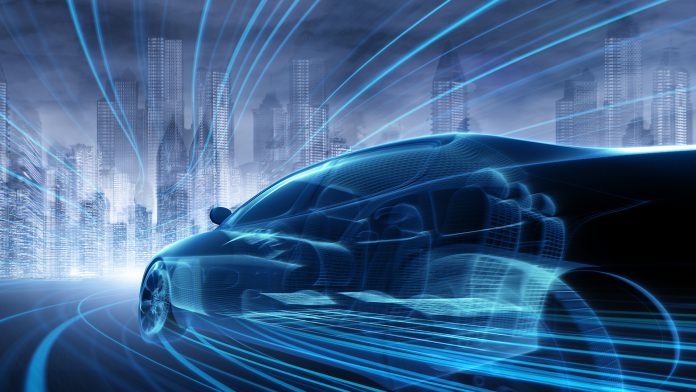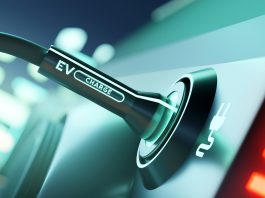The Oak Ridge National Laboratory (ORNL) has announced that it has licensed its revolutionary wireless electric vehicle charging technology to HEVO, a pioneering company developing charging solutions for achieving the electrification of transport.
The ORNL, which is sponsored by the US Department of Energy (DOE), has developed groundbreaking electric vehicle charging technology that has the potential to change the landscape of the automotive world, providing wireless charging that in the future will be able to resupply power to electric vehicles as they are driven.
Additionally, the innovative electric vehicle charging technology will achieve the world’s highest power levels within the smallest package, with HEVO and ORNL continuing to enhance the technology to improve its levels of power and efficiency further.
Xin Sun, an associate laboratory director for energy science and technology at ORNL, said: “Highly efficient wireless charging is a breakthrough technology that can alleviate electric vehicle range anxiety and facilitate the US effort to decarbonise the transportation sector. We are excited to see another one of our technologies move into the private sector where it can create new green jobs and support the nation’s clean energy goals.”
What does the license involve?
The license includes ORNL’s unique polyphase electromagnetic coil that achieves a power density of 1.5 megawatts per square metre, eight to 10 times higher than conventional technology. The exceptional surface power density allows for higher power levels in a thinner, lighter coil, which reduces the overall weight of the electric vehicle, increasing its range. ORNL’s Oak Ridge Converter is also included in the license; this technology eliminates one of the power conversion stages that is required for wireless power transfer, creating a more compact and economic infrastructure.
The state-of-the-art technology facilitates hands-free, wireless electric vehicle charging that can even re-energise cars as they are being driven over specially designed roads, with HEVO and ORNL working to make the technology available to commercial manufacturing. Jennifer Granholm, the US Secretary of Energy, recently announced the Technology Commercialisation Fund award, which will see HEVO and ORNL further collaborate to design a 300-kW wireless charging system that follows the infrastructure of the ORNL converter and associated power electronics.
Jeremy McCool, the founder and CEO of HEVO, said: “Electric vehicle charging must be simple, seamless and safe in order to accelerate mass adoption and prepare for an autonomous future. Our collaboration with ORNL utilises HEVO’s strength in designing, developing, and commercialising wireless charging technology and software as the first and only company in the world that is compliant with both SAE and UL safety and performance standards.
“Together, we are developing the fastest and most universal wireless charging platform in the world. From only one device mounted on the vehicle, a driver will now have the advantage of wirelessly charging at all levels up to 300-kilowatts, powering their home through a vehicle-to-grid interface, and even charging while driving at highway speeds with grid-to-battery efficiency of 90 to 96.5%. All of this functionality is built into a vehicle-side package the size of a medium pizza box and the ready-made capability to charge electric vehicles without a human behind the steering wheel.”
The Department of Energy has set itself the ambitious objective of developing hands-free, automated, wireless electric vehicle charging that is able to compete with conventional refuelling as the US moves toward decarbonising its transport sector. They are optimistic that refining electric vehicle charging technology will reduce consumer concerns about driving range and charging infrastructure.
Progressing electric vehicle charging infrastructure
The wireless electric vehicle charging technology works by re-energising the electric vehicle’s battery as it is parked over a charging pad or driven over a specially designed road that transfers power across an air gap between magnetic coils embedded in the ground and on the car.
Today, the majority of electric vehicles are outfitted with battery packs that range from 30 kWh to 60 kWh, with high-end, longer-range vehicles having 100 kWh batteries that take between 15 to 20 minutes to charge from a 300-kW charging system. In order to reduce charging times down to 5 to 10 minutes, power must be increased to half a megawatt or more, with heavy-duty vehicles requiring battery packs with several hundred kWh energy storage capacity, which would need megawatt-level charging.
Burak Ozpineci, the section head for Vehicle and Mobility Systems Research at ORNL, said: “Opening up new parts of the transportation sector to electrification is a key benefit of this technology. It’s not just about charging your vehicle really fast. It’s also about being able to convert to long-haul electricity trucks, which burn a significant portion of the vehicle fuel used in this country.”
The ORNL developed electric vehicle charging system is proficient in the electrification of heavy-duty trucks.
Veda Galigekere, who leads ORNL’s Electric Drives Research Group, commented: “Right now, those big trucks would require massive battery packs that add significant weight and cost to the vehicle. But with dynamic wireless charging on interstates, for instance, you can reduce the onboard battery capacity needed while alleviating range anxiety.”
The ORNL converter, which is included in the HEVO licensing agreement, directly converts 60-hertz AC power from the grid to high-frequency AC without the requirement of being converted to DC power. The innovative design of the converter reduces the volume, weight, and size of stationary, grid-side infrastructure by up to 50%.
Omer Onar, the leader of the ORNL Vehicle Power Electronics Research Group, said: “That means you could park another vehicle in the space saved in a city garage, for instance, and we would need less construction to embed charging pads under roadways or parking spots. With ORNL’s advancements, wireless charging is becoming more feasible, practical, and safe.”
“The world of automotive is going to change faster in this decade than it has in the past century, and we need a step-change in EV charging to unlock the full potential of this burgeoning multi-trillion-dollar industry,” commented McCool. “We believe this is the leapfrog technology that will change people’s way of living and doing business across the globe. HEVO is excited to be at the forefront of this movement.”









